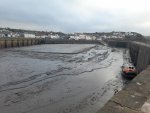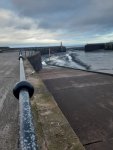sarabande
Well-known member
I do hope that the council is taking precautions that the houses just to the West of the big wall are protected. I can remember them being damaged about 12 years ago by a big storm.
Chris, that is astonishingly effective work you are showing. Congrats to the skipper and crew; they are winning friends.
With all that silt in suspension in the water, how do you manage to cool the engine without bringing in cloggy mud ?
Chris, that is astonishingly effective work you are showing. Congrats to the skipper and crew; they are winning friends.
With all that silt in suspension in the water, how do you manage to cool the engine without bringing in cloggy mud ?



